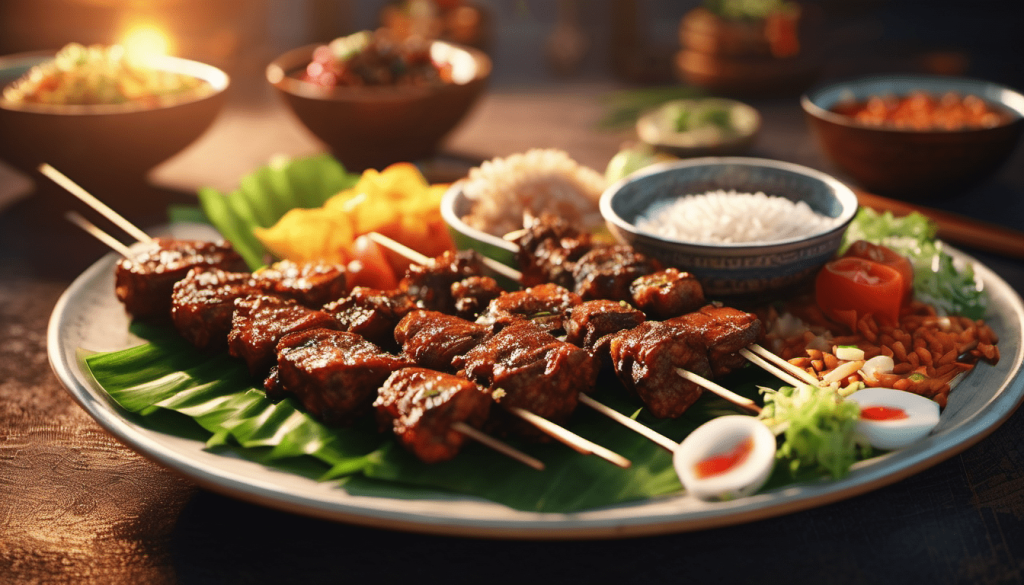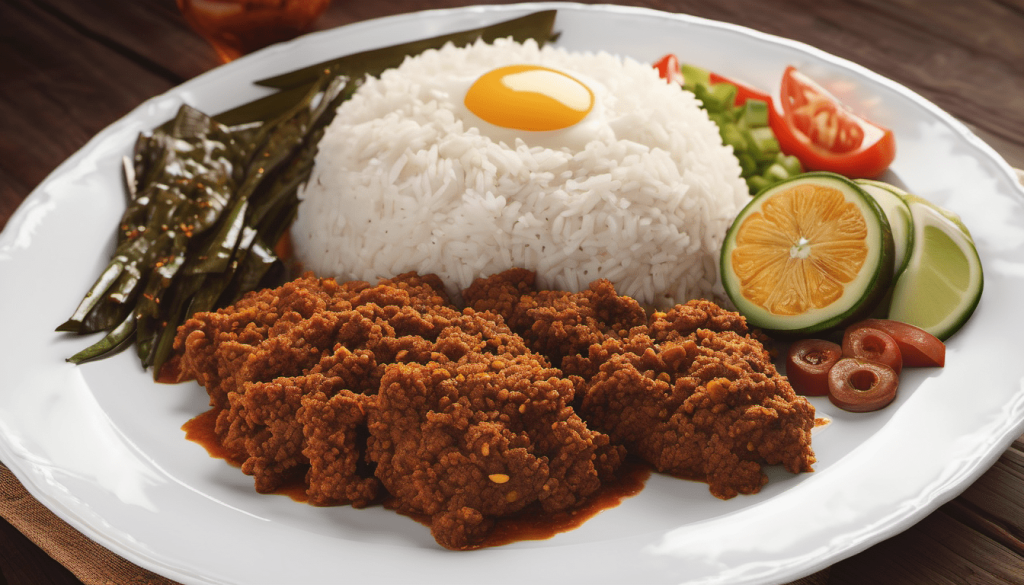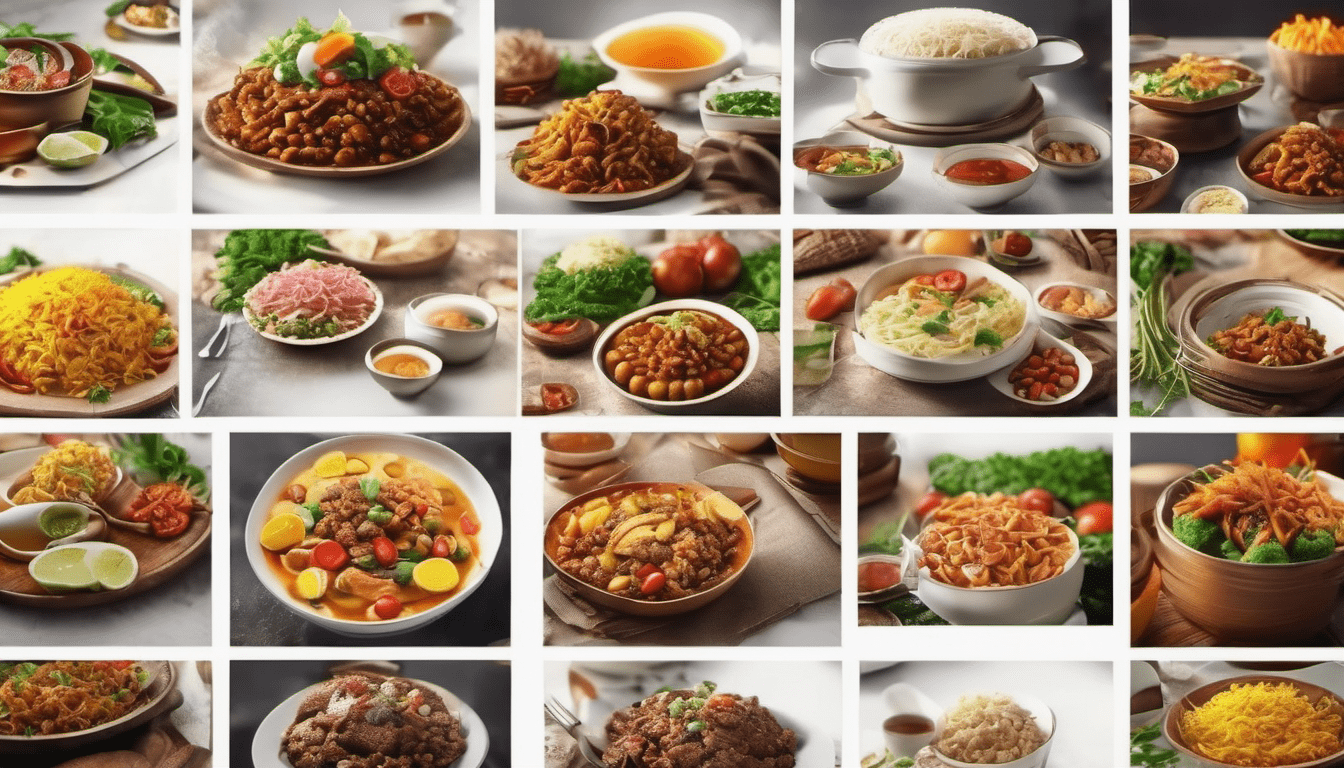The Richness Indonesian Traditional Food
Indonesia is renowned for its diverse culture, vibrant landscapes, and, of course, its rich culinary heritage. Indonesian traditional food reflects the country’s diverse cultural influences. From the spicy flavors of Sumatra to the aromatic dishes of Java and the fresh seafood of the islands,. Let’s embark on a culinary journey to discover the delicious and diverse world of Indonesian traditional food.
Cultural Diversity and Culinary Traditions
Indonesia is home to hundreds of distinct ethnic groups, each with its own unique culinary traditions and specialties. The diversity of Indonesian traditional food reflects the country’s rich cultural tapestry. With influences from Malay, Chinese, Indian, Arab, and European cuisines. This cultural diversity is evident in the wide variety of ingredients, flavors, and cooking techniques used throughout the archipelago.
Rice as a Staple Food
Rice is the staple food of Indonesia and serves as the foundation of many traditional dishes. From savory rice dishes like nasi goreng (fried rice) and nasi uduk (coconut rice) to sweet treats like ketan (sticky rice) desserts, rice plays a central role in Indonesian cuisine. Different regions of Indonesia have their own unique rice varieties and preparations, reflecting the local climate, soil, and agricultural practices.
Spice Islands: The Heart of Indonesian Flavors
Spices are the soul of Indonesian cuisine, adding depth, aroma, and complexity to traditional dishes. The Spice Islands, also known as the Maluku Islands, have been the center of the global spice trade for centuries. Exporting spices like cloves, nutmeg, and mace is pricy. Indonesian traditional food is renowned. For its bold and aromatic flavors, with common spices including turmeric, ginger, galangal, lemongrass, and chili peppers.
The Art of Nasi Padang
Nasi Padang is one of Indonesia’s most iconic dishes, originating from the Minangkabau people of West Sumatra. This culinary tradition features a lavish spread of flavorful dishes served with steamed rice. From spicy rendang (slow-cooked beef) to crispy fried chicken, fiery sambal (chili paste), and savory gulai (curry), Nasi Padang offers a feast for the senses that showcases the richness and diversity of Indonesian flavors.
Indonesian Traditional Food Delights

Indonesia is famous for its vibrant street food culture, with bustling markets and roadside stalls offering an array of tasty treats. From savory snacks like sate (skewered meat), bakso (meatball soup), and mie ayam (chicken noodles) to sweet indulgences like kue (cakes), klepon (rice cakes filled with palm sugar), and es cendol (coconut milk dessert), Indonesian street food offers a diverse and affordable dining experience for food enthusiasts.
The Joy of Rendang

Rendang is a slow-cooked meat dish that hails from the Minangkabau region of West Sumatra. Made with tender beef simmered in coconut milk and a rich blend of spices, rendang is famous for its complex flavors and melt-in-your-mouth texture. During special occasions and celebrations, you can see the natives serving the iconic dishes, reflecting the deep cultural significance and culinary heritage of the Minangkabau people.
The Elegance of Javanese Cuisine
Java, the most populous island in Indonesia, is known for its refined and aromatic cuisine. Javanese dishes often feature a harmonious blend of sweet, savory, and spicy flavors, with ingredients like palm sugar, coconut milk, tamarind, and aromatic herbs and spices. From the iconic gudeg (young jackfruit stew) to the fragrant opor ayam (coconut chicken curry) and the hearty soto ayam (chicken soup), Javanese cuisine offers a culinary journey through Indonesia’s rich history and cultural heritage.
Indonesian Traditional Food: Fresh Flavors of the Sea
Given Indonesia’s extensive coastline and abundant marine resources, seafood plays a prominent role in traditional Indonesian cuisine. From grilled fish and seafood soups to spicy seafood curries and stir-fried dishes, Indonesian seafood dishes showcase the freshest catch of the day. Indonesians often use coconut milk, lemongrass, turmeric, and lime to enhance the natural flavors of seafood, creating dishes that are both delicious and nutritious.
The Influence of Dutch Colonialism
Dutch colonial rule in Indonesia left a lasting impact on the country’s culinary landscape. Dutch-influenced dishes like rijsttafel (rice table) and poffertjes (mini pancakes) have become part of Indonesia’s culinary repertoire, reflecting the fusion of European and Indonesian flavors. The legacy of Dutch colonialism is also evident in Indonesian pastries and baked goods. Treats like kue lapis (layered cake) and spekkoek (spice cake) are popular choices for special occasions.
Celebrating Tradition Through Food

Food plays a central role in Indonesian culture and tradition, with many dishes being served during religious festivals, weddings, and other special occasions. Traditional cooking methods like steaming, grilling, and slow cooking. Those are passed down through generations, preserving the authenticity and integrity of Indonesian cuisine. Through food, Indonesians celebrate their cultural heritage and express their love and hospitality to family and friends.
Embark on a culinary adventure through the flavors of Indonesia’s traditional food. You may also discover the rich cultural heritage and diversity of this vibrant archipelago. From aromatic rice dishes and spicy curries to savory street food delights and sweet indulgences,. Indonesian cuisine offers a feast for the senses that will tantalize your taste buds and leave you craving for more. Join us as we explore the culinary wonders of Indonesia and celebrate the joy of food, culture, and tradition.



